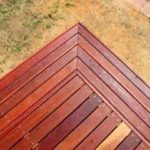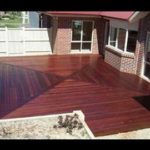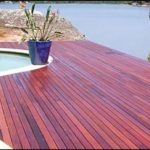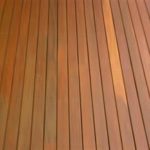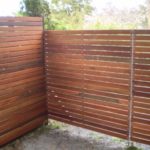Hardwood Decking Ironbark Grey & Red
- Home
- /
- Products
- /
- Categories
- /
- Decking & Screening Timbers
- /
- Hardwood Decking Iron bark Grey & Red
Browse Products
Enquiry Form
Decking & Screening Timbers
Hundreds of timber products under the one roof
IRONBARK GREY & RED
| BOARD WIDTHS (mm) | PER L/M |
|---|---|
| 86 x 19 | P.O.A. |
| 130 x 22 | P.O.A. |
BE CONFIDENT WITH YOUR CHOICE, OUR TIMBER IS ETHICALLY SOURCED
Our suppliers of timber decking and flooring have Chain of Custody certification, which meets the Australian Forestry Standard (AFS) AS 4707-2006. With Australian Forestry Standard (AFS) certified products, our timbers are sourced from legal and sustainably managed resources.
INSTALLATION
MAINTAINING YOUR DECK
Timber decking is typically made from Class 1 or 2 hardwood or Cypress timbers, or from an H3 treated pine. All three decking products, regardless of their durability, benefit from a coating of timber finish, after the deck is installed. Using a timber finish promotes timber endurance for the life of your deck.
DID YOU KNOW?
Continuously high moisture content (>20%) is likely to lead to fungal attack. Using a timber finish helps to prevent this by keeping the timber dry, and repelling moisture, rain and water spillages.
Ultra Violet light reacts with lignin in the timber’s cells and turns timber grey, which is not structurally damaging. Coating your deck with your choice of finish will help to prevent greying.
All timbers require to be coated with a timber finish product. A simple coating of a quality product some type to instill a high level of water repellence. Left natural and bare, timber (particularly softwoods) will absorb moisture and will expand, then shrink as it dries out. Recurrent cycle lead to surface cracking and checking. Using a timber finish will help prevent this occurring.
HOW OFTEN SHOULD I MAINTAIN MY DECK?
Hardwood and Cypress decking is exposed to the elements and it is important to protect your deck. To preserve the colour of the timber species and improve the life of the deck, apply a decking finish to the exposed surfaces. Re-apply according to the manufacturer’s instructions.
We recommend washing your deck down with one of our cleaning products around once per year. Simply re-apply the timber finish of your choice as there is generally no need to sand your deck back prior to reapplying your finish.
View our range of timber finishes and oils for more information and products.
FOR MORE INFORMATION ON OTHER STOCKED HARDWOODS, FEEL FREE TO CALL OUR FRIENDLY SALES TEAM.
GREY IRONBARK
| Botanical Name: | Eucalyptus paniculata |
|---|---|
| Preferred Common Name: | Ironbark, Grey |
| Other Names: | White Ironbark, Eucalyptus drepanophylla, Eucalyptus siderophloia, Eucalyptus decepta |
| Species Type: | Hardwood |
APPEARANCE
Grey ironbark sapwood is almost white, making it highly distinct from the heartwood, that ranges from light grey or light chocolate with occasional darker reds and browns. The texture is moderately coarse and even, and the grain usually straight, and only occasionally interlocked. Grey Ironbark may have regional variations in colour, with some having black narrow to broad streaks running through the timber.
COMMON APPLICATIONS
Due to its class 1 strength and durability ratings, grey ironbark is commonly used in engineering applications as a sawn and round timber. It can be specified for wharf and bridge construction, railway sleepers, cross arms, poles, piles and mining timbers.
The unseasoned timber is excellent for general house framing, while seasoned and dressed grey ironbark timber is used for cladding, internal and external flooring, linings and joinery. It is also ideal for fencing, landscaping and retaining walls.
The timber’s versatility extends to boat building (keel and framing components, planking), including reputed use in the hulls of early ice-breaker ships. Coach, vehicle and carriage building, agricultural machinery, mallet heads, mauls and bearings, sporting goods (croquet mallets, parallel bars) and bowling ninepins have all been made from grey ironbark.
COMMON FORM
Sawn
WORKABILITY
Grey ironbark has been employed for decorative purposes such as in outdoor furniture, turning and joinery, although its density makes it hard to work in applications requiring fine detail.
It is slow drying and should be handled carefully to avoid surface checking.
ORIGIN OF TIMBER
NSW, QLD
READILY AVAILABLE
NSW, QLD
AVAILABILITY - FURTHER INFORMATION
Grey Ironbark is common to coastal regions of NSW and in southern Queensland. E paniculata is the most common commercial species of Ironbark timber. It is not generally available in a range of sizes, but can be supplied to order. Large sizes in particular are commonly ordered for structural uses, so it is more readily available in this form.
RED IRONBARK
| Botanical Name: | Eucalyptus sideroxylon |
|---|---|
| Preferred Common Name: | Ironbark, Red |
| Other Names: | Mugga, Ironbark |
| Species Type: | Hardwood |
APPEARANCE
Red ironbark heartwood is a deep red, contrasting dramatically with its distinctive pale yellow sapwood. It has a fine and even texture with an interlocked grain.
COMMON APPLICATIONS
Red ironbark is used for heavy engineering, transport, and marine construction, including poles, piles, sleepers, flooring, decking, bridge work, fencing, carriages and wagons, house framing and sporting goods. It is also useful for domestic and non-domestic decks, joinery, furniture and fit outs and expressed hardwood structures.
COMMON FORM
Sawn
WORKABILITY
Red ironbark is very hard to work, limiting some applications that require fine detailing. It is slow to dry and care needs to be taken to minimise surface checking.
ORIGIN OF TIMBER
NSW, VIC, QLD
READILY AVAILABLE
NSW, VIC, SA, TAS, QLD, WA
AVAILABILITY - FURTHER INFORMATION
Red ironbark is readily available in Australia.
SOURCE OF TIMBER
Native Forest, Plantation

